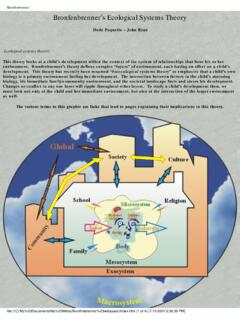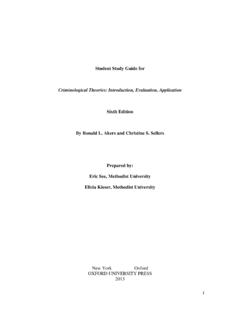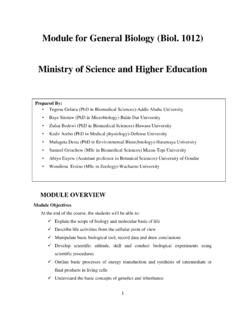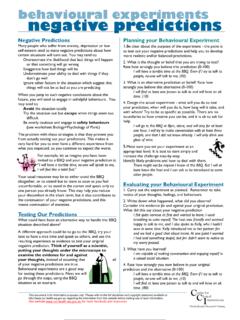Transcription of Organizational and Individual Decision Making
1 Organizational and Individual Decision MakingOrganizational and Individual Decision MakingKathleen M. CarleyAssociate Prof. of Sociology and OrganizationsDept. of Social and Decision SciencesCarnegie Mellon UniversityDean BehrensDept. of Social and Decision SciencesCarnegie Mellon UniversityCitation: Kathleen M. Carley & Dean Behrens, 1999, Organizational and IndividualDecision Making . Ch. 18 in Sage & W. B. Rouse (eds.), Handbook of SystemsEngineering and Management. John Wiley and Sons, and Individual Decision MakingOrganizational and Individual Decision MakingAbstractOrganizational Decision Making is a product of both the way individuals makedecisions and the context in which these individuals make decisions.
2 Current work inthis area draws drom the areas of behavioral Decision theory, social network, informationprocessing, cognitive psychology, artificial intelligence, and computational organizationtheory. Collectively, the work in this area suggests that limits to cognition and rationalityand the structure of relations among individuals and organizations are equally importantin determining what decisions are made. Advances in this area are facilitated by the useof computational models of organizations in which Organizational decisions result fromthe concurrent actions and interactions among multiple distributed intelligent andadaptive and Individual Decision Making 1 Organizations do not make decisions, people do.
3 This observation is a statement of bothstructural and operational fact: organizations (as physical realities, not accounting or legalentities) are made by, and are comprised of, people. There may be transportation, transformation,technological, computation and communication infrastructures to support human decisionmakers. These infrastructures generally have differential impact on the individuals in question,affect what information they have access to, and so what decisions they make. Nevertheless,organizations are all created, supported, maintained and operated by these individuals . Thus, theissue of socially constrained, but nevertheless indvidual Decision Making , lies at the heart ofresearch on Organizational Decision humans comprise organizations is neither a questionable nor a key issue from anorganizational Decision - Making perspective.
4 What is important is whether any (or all) ofindividual behavior can affect the constructs theorized or measured at the Organizational researchers have argued that human behavior is largely irrelevant. For example, Schelling(1978) presents the game of musical chairs as an example of a class of Organizational behaviorpatterns that are realized in the aggregate independent of how the individuals who form theaggregate behave (within the rules of the game). No matter how the individuals play the game,one will always be left chairless. Thus, if one has a theory of the game, the players are simplyagents carrying out the rules and roles of the game and general outcome can be predicted withoutmodels of the Individual agents (again, as long as they play by the rules).
5 Thus the form of thegame itself makes the specific model of the Individual agent irrelevant. Secondly, it has beenargued that because of scale the specific model, of the Individual agent is irrelevant. This wouldsuggest that for markets, national economies, and social structures, it is important to measure theaggregate or collective behavior of players, but not the Individual microprocesses underlyingthese Individual behaviors. In this sense, individuals may be (succinctly) represented in anaggregate manner ( , a production function or a cost curve) which reflects their collectivebehaviors. Thirdly, it has been argued that there are general principles of organizing that are trueOrganizational and Individual Decision Making 2 for any collection of entities and not peculiar to humans.
6 Thus, these principles should beapplicable to any collection of intelligent, adaptive agents, such as individuals , webbots orrobots, engaged in distributed and collaborative a model of the Individual agent requires Making a series of simplifyingassumptions. For Schelling these assumptions include that the game does not change and thatthe agents follow the rules of the game. In neoclassical economics and political economy, on anaggregate level (for macroeconomics, the industry; for microeconomics, the firm), there areunderlying assumptions of the participating agents' perfect knowledge and perfect choice. Yetmaking simplifying assumptions is an important step in science, and for some types of research( , for some types of questions), these are acceptable, simplifying assumptions.
7 Nevertheless,it should be realized that these assumptions, as a representation of Decision Making reality withinorganizations, are largely incorrect. Organizations, like games, are artificial in the sense thatthey are crafted by humans (Simon, 1981a). But, unlike many games, organizations are veryvolatile or fluid constructs; that is, the rules change, the players change, and the situations change(Cohen, March and Olsen, 1972; March and Romelaer, 1976). This volatility is due in large partto the agents which comprise them. Hence, within organizations, the form of the game dependson the agents and their personal history. From a managerial perspective this strong interactionbetween cognition and task opens the avenue to strategies involving changing not just the taskbut the type of agents who engage in a task to achieve a particular level of performance.
8 As tothe scale argument, the rational expectations model opposes much of what is known of humanreasoning (Simon, 1979) and as a representation of Decision Making is largely incorrect (Simon,1959, 1979). The principles of organizing argument is, from an Organizational standpoint, themost intriguing. This argument cannot be easily wiped away by pointing to the interactionbetween agent-cognition and task. Rather, the issue here forces the researcher to establish thegeneral principles and then generate the conditions under which, and the ways in which, agentcognition and Individual Decision Making 3 For the most part, Organizational theorists interested in Individual and Organizational decisionmaking take this latter perspective and argue for the relevance of the agent-model.
9 In this case, Organizational behavior is seen as an emergent property of the concurrent actions of the agentswithin the organization. This body of research has been informed by the work in distributedartificial intelligence, computational biology , information systems, social networks, behavioraldecision theory, and human computer interaction and is influencing work in organizations,particularly that on Organizational Decision summary Organizational performance is a function of both Individual actions and thecontext in which individuals act (see Figure 1). This context includes the web of affiliations inwhich the Individual is embedded, the task being done, and the organization's structure andextant cultue.
10 Any model that does not include both Individual cognition and context and theway in which these mutually co-adapt will not be able to explain or predict behaviors associatedwith collaborative and distributed work.** Place Figure 1 About Here **1 The Individual in the OrganizationPerhaps, the Individual who could best be described as the founder of the work on individualdecision Making within organizations would be Chester Barnard. In 1938, Barnard wrote thebook, The Functions of the Executive. His analysis of individuals in organizations, particularlyof individuals in cooperative systems was the precursor for many future studies as was the workby Roethlisberger and Dickson (1939).






